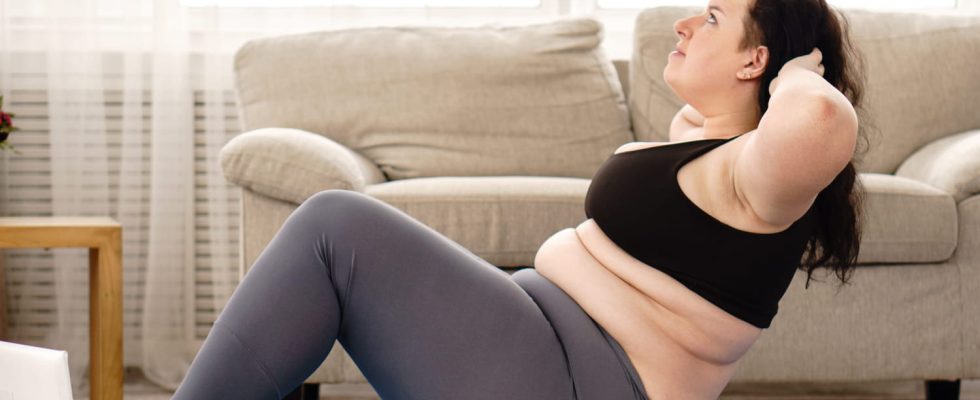Those who do abs every day to lose belly fat are completely wrong according to several studies. Losing belly fat doesn’t work at all like you think.
In a world where social networks and online advertising claim to have quick solutions for losing belly fat, several recent studies debunk the myth of localized fat reduction. According to them, advertisements that sell a concept called “targeted reduction”, by promising the loss of fat in specific areas of the body through specific exercises or diets, are completely wrong.
Health debate expert Nick Fuller explains that our bodies are programmed to burn all of our fat stores for energy during exercise, not just those we seek to target during exercise. . This theory is based on the analysis of “triglycerides”, the lipids linked to cholesterol which are stored in our fat cells. Also called “adipocytes”, they are released into our blood and transported to adipose tissue.
These fat stores, distributed throughout the body, are our primary source of energy during periods of prolonged exercise or fasting.
But a clinical study randomized 12-week study, published by American researchers, showed that when doing abdominal exercises, all of these triglycerides are used, not just those in the stomach. No significant reduction in abdominal fat was seen in people who combined abdominal exercises with a change in diet compared to those who just changed their diet.
Another one international analysis of 2021 including more than 1100 participants also concluded that localized strength training had no effect on localized fat deposits. When it comes to over-the-counter pills and supplements, two recent studies from the University of Sydney analyzing more than 120 placebo-controlled trials showed no clinically significant reductions in weight in overweight or obese people.
It’s important to understand that our genetics and gender play a significant role in how and where fat is stored and lost first. For example, women tend to lose weight first in the face, calves and arms, as these areas affect motherhood the least, while middle-aged men and postmenopausal women store more visceral fat around from the middle of the body.
The reality is that we cannot control where our body loses fat. However, all physical activity helps burn body fat and preserve muscle mass, leading to a change in body shape over time and helping with long-term weight management. With greater muscle mass, our metabolism is more active, thus burning more energy.
Long-term fat loss involves reducing weight in small, manageable, sustainable steps, alternating periods of weight loss with periods of weight maintenance. It also requires gradual changes in lifestyle (diet, exercise, and sleep) to form lasting habits.
